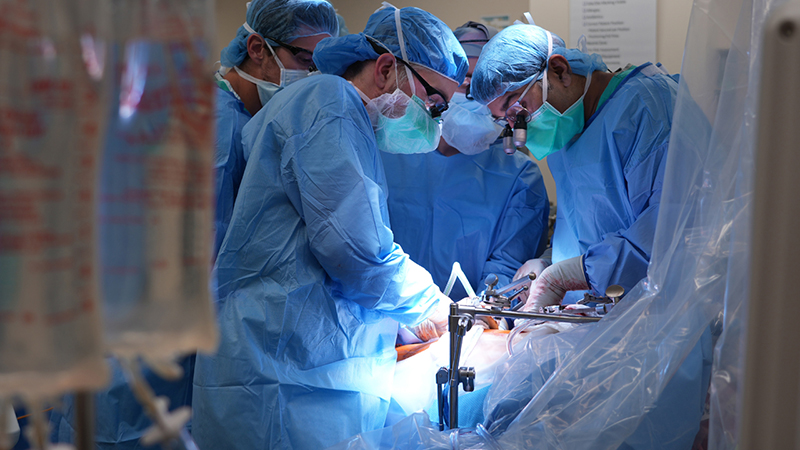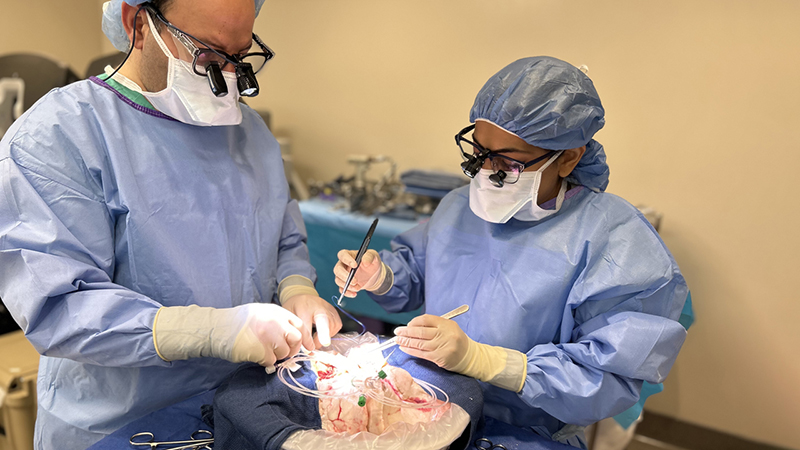Advances in Care for Birth Defects
Published December 2020
Prevention and Treatment Through the Decades
A baby is born in the U.S. with a birth defect every four and a half minutes. About 3 percent of U.S. newborns have a birth defect, which is the leading cause of death among infants.
“A birth defect is a structural abnormality in a newborn that can be very minor, and does not require treatment, or can be major and affect the heart, brain, skeleton and other organ systems,” says Jessica W. Kiley, MD, obstetrician and gynecologist at Northwestern Memorial Hospital.
Although certain birth defects are related to genetic abnormalities, others are potentially preventable through lifestyle changes and early intervention, either during the pregnancy or shortly after the baby is born. Reviewing a history of developments in prevention and treatment reveals a timeline of enhanced health care and awareness around birth defects.
Preventative Lifestyle Changes and Primary Care
Exposure to Teratogens and Substance Abuse
A number of harmful substances, often referred to as teratogens, can alter the development of an embryo and fetus. First recognized in the 1970s, fetal alcohol spectrum disorders (FASDs) are physical, emotional and mental conditions that result from a person’s consumption of alcohol during their pregnancy. The results can range from the baby having a below-average weight and height to having poor memory and learning disabilities. It is now widely known that pregnant women should not consume alcohol and illicit drugs, but clinical trials are exploring whether FASDs are reversible with treatment in utero.
In addition to alcohol and illicit drugs, recommendations for what pregnant patients should avoid include some prescription drugs, such as acne treatment medications like Accutane. Other agents that should be avoided include high dose X-ray radiation and chemicals like mercury, which is often found in fish. Some pregnant patients are advised to temporarily change their current therapy for preexisting medical conditions. Part of the pregnancy education physicians provide their patients can help them avoid such teratogens to protect their baby.
Link Between Supplements and Birth Defects
Neural tube defects (NTDs) are a category of birth defects that involve structural abnormalities in the spinal cord. NTDs include spina bifida (a spinal cord defect), anencephaly and encephalocele (two types of brain defects), and their development is related to folic acid intake during pregnancy. “This finding spurred the recommendation for folic acid supplementation for the prevention of this subset of birth defects,” says Dr. Kiley. Taking folic acid for one month before conception and into the first trimester can reduce the chance of having a baby with birth defects (affecting the spinal cord and brain) by as much as 70 percent.
This finding spurred the recommendation for folic acid supplementation.— Jessica W. Kiley, MD
Since the early 1990s, pregnant women have been generally advised to take a prenatal vitamin supplement that includes folic acid. By consulting their OB-GYN, women can learn what supplements are right for them to take before, during and after pregnancy.
Correlation Between Chronic Illness and Birth Defects
In some cases, birth defects are preventable when they are related to other conditions the mother might have, such as asthma, epilepsy and diabetes. Research has linked preexisting diabetes among pregnant women to birth defects of the heart, spine and brain.
However, women with preexisting conditions like diabetes can increase their likelihood of having a healthy baby by consulting their providers to prepare for pregnancy and manage their condition. Since the early 2000s, studies have shown that by managing blood sugar levels before and during pregnancy, women with preexisting diabetes can significantly reduce their baby’s risk of having a congenital heart defect.
Early Intervention
Prenatal Ultrasound
In the 1970s, the establishment of the prenatal ultrasound enabled a much greater understanding around fetal development, imaging and structural birth defects, including those of the heart, skeleton and gastrointestinal tract. Advancements in this technology, including 3D and 4D ultrasound technology, have paved the way for diagnostic procedures and earlier treatment for birth defects that were previously not as easily detectable across a standard ultrasound, including cleft palate.
Fetal Echocardiograms
During a screening ultrasound, one of the assessments involves the baby’s heart. If an abnormality is detected during the ultrasound, a fetal echocardiogram is then recommended. First explored for use during pregnancy in the early 2000s, an echocardiogram can aid in the diagnosis of a congenital heart defect (CHD), the most common birth defect in the U.S. It is vital that babies with CHD get their diagnosis before birth so the delivery team can begin treatment as soon as they are born.
Prenatal Diagnostic Testing
In addition to routine screening via ultrasound, “chromosome testing is offered by most OB-GYN practices,” says Dr. Kiley. The first prenatal diagnostic testing traces back to the 1950s with amniocentesis, a medical procedure that takes a small sample of amniotic fluid surrounding the fetus to test for chromosomal abnormalities, diagnose any infection and identify sex. Such testing has evolved since then to increase in safety and efficacy.
Today, prenatal genetic testing more accurately helps identify chromosomal abnormalities during pregnancy, including Down syndrome, sickle cell disease, cystic fibrosis and other conditions. They generally fit into one of two categories:
- Screening tests: noninvasive tests that isolate the level of risk for certain genetic conditions, rather than provide a definite answer on whether the genetic condition is present. Examples of noninvasive tests are cell-free DNA screening (via a mother’s blood test) and sequential screening — taking into account a mother’s blood test, ultrasound measurements and biochemical markers such as hormone levels.
- Diagnostic tests: invasive tests that determine whether the genetic condition is present. Offered to mothers and couples who are at a higher risk of having a baby with a birth defect, such testing is more accurate but comes with risk of miscarriage. Chorionic villus sampling (CVS), which involves sampling cells from the placenta, and amniocentesis are examples of invasive diagnostic tests.
Evolution of Fetal Therapy
With origins in the late 1900s, fetal therapy is an early intervention performed before a baby is born to prevent or treat life-threatening birth defects. Such therapy can involve open surgery or a less invasive method that uses a fetoscope or blood transfusions. Spina bifida and lower urinary tract obstruction (LUTO) are two types of birth defects that can be treated with fetal therapy or surgery.
Fetal therapy is an evolving field, with technological advancements and additional research substantiating the benefits of certain procedures. For example, antenatal magnesium sulfate treatment may reduce the risk of cerebral palsy associated with preterm delivery.
Expanding Newborn Screening Tests
“Some birth defects and other conditions cannot be detected during pregnancy. These will be detected during screening after birth,” says Dr. Kiley. For birth defects like critical CHDs and metabolic disorders, newborn screening tests are valuable for identifying any issues and performing early, life-altering intervention, including neonatal surgery. First introduced in the 1960s, newborn screening tests are now routinely performed on most babies in the U.S. by taking a few drops of blood from the heel of a newborn.
If you are pregnant, you can increase your chances of having a healthy baby by consulting your provider and reviewing these pre-pregnancy and pre-labor tips.






